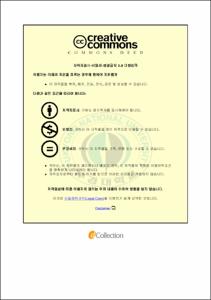다종제품 다종차량 동적 로트크기결정 문제에 대한 납품시간창 디스패칭 정책에 관한 효과 분석
- Alternative Title
- The Effect on a Delivery Time Window Dispatching Policy for a Multi-item Multi-vehicle Dynamic Lot-sizing Problem
- Abstract
- 생산자부터 제3자 물류창고로 물류가 입고되고 물류를 취합하여 고객에게 납기 내에 배송되는 제3자 물류 창고의 인바운드 로트크기 결정 및 아웃바운드 디스패칭 문제은 공급사슬망 물류 효율성 제고 측면에서 매우 중요하다.
본 논문은 제3자 물류창고 프로세스 관점에서 고객으로의 디스패칭 정책 중 가장 일반적인 납품시간창 디스패칭 정책을 고려한 인바운드 최적 로트크기결정 및 아웃바운드 디스패칭 모형의 효율성을 검증하고자 한다. 본 논문에서는 다양한 고객의 형태, 제품의 종류 및 크기, 차량의 형태, 그리고 운송비용 정책을 고려한다. 또한, 수요는 계획기간동안 매기간 동적(Dynamic)으로 발생하는 동적 수요를 고려하고 제품은 납품시간창 내에 고객에게 인도되는 납품시간창 디스패칭 정책을 고려한다. 추후조달(backlogging)은 허용되지 않는다. 주문이 발생하면 각 제품은 각각 다른 적재용량을 가지는 팔레트에 적재되고 각 팔레트는 다종차량의 적재용량에 맞게 적재가 된다. 운송비용은 사용되는 차량 종류의 사용대수에 비례한다. 납품시간창을 고려한 디스패칭 정책의 효율성을 검증을 위해 제3자 물류센터로부터 배송되는 방식에 따라 단일고객과 복수고객 2가지로 나누고 각 제 3자 물류창고로 입고되는 인바운드 운송차량의 형태에 따라 단종차량-다종차량 2가지로 나누어 단일고객-단종차량, 단일고객-다종차량, 복수고객-단종차량, 그리고 복수고객-다종차량의 총 4가지 최적화 모형을 개발한다. 제시된 최적화 모형들에 대한 납품시간창 디스패칭 정책의 효과성 검증을 위해 다양한 실험 환경 하에서 납품시간창을 고려하지 않는 모형들과 비교함으로써 그 효과성을 입증한다.
주제어: 납품시간창; 다종제품; 제품크기; 다종차량; 동적 로트크기결정; 디스패칭; 혼합정수계획모형
Decisions of inbound lot-sizing from manufacturers to a third-party warehouse and outbound dispatching from a third-party warehouse to customers are critical to improve the logistics efficiency of supply chain.
This thesis analyzes the effect of an inbound lot-sizing and outbound dispatching problem considering the dispatching policy with delivery time windows in a view of a third-party warehouse. The dispatching policy with delivery time windows is the most popular and general dispatching policy in practice and it defines demands of each item which must be satisfied to the corresponding delivery time window. This thesis considers the following problem environments: customer type, item type, vehicle type, and freight cost policy. Also, the demand of each item to customers is dynamic over a discrete and finite time horizon. The dispatching policy with delivery time windows is considered. Backlogging is not allowed. Replenishing orders are shipped by several types of vehicles and the numbers of items per unit-load pallet are different for each item type. Also, each vehicle type loads the different number of unit-load pallets. The freight cost is proportional to the number of vehicles used.
For confirming the effect of the dispatching policy with delivery time windows, we develop four cases of optimization models with delivery time windows: 1) single customer - single vehicle, 2) single customer - multi-vehicles, 3) multi-customers - single vehicle, and 4) multi-customers - multi-vehicles. Then we compare the optimization model of each case with optimization models without delivery time windows and verify of the effect of the dispatching policy with delivery time windows though various test problems.
Keywords: Delivery time windows; Multi-items; Multi-vehicles; Dynamic lot-sizing; Dispatching; Mixed Integer Programming model
- Issued Date
- 2013
- Awarded Date
- 2013. 8
- Type
- Dissertation
- Publisher
- 부경대학교
- Alternative Author(s)
- Yu, Jung Hwan
- Affiliation
- 대학원
- Department
- 대학원 기술경영협동과정
- Advisor
- 이운식
- Table Of Contents
- 제 1장 서론 ••••••••••••••••••••••••••••••••••••••••••••• 1
1.1 연구배경 ••••••••••••••••••••••••••••••••••••••••••• 1
1.2 기존 연구 현황 •••••••••••••••••••••••••••••••••••• 5
1.3 연구 현황 •••••••••••••••••••••••••••••••••••••••••• 9
1.3.1 Case-1(단일고객) •••••••••••••••••••••••••••• 10
1.3.2 Case-2(복수고객) ••••••••••••••••••••••••••••• 12
제 2장 최적화 모형 ••••••••••••••••••••••••••••••••••• 15
2.1 MISV 및 MISV-TW의 최적화 모형 ••••••••••••••• 17
2.2 MIMV 및 MIMV-TW의 최적화 모형 •••••••••••••• 21
2.3 MIMCSV 및 MIMCSV-TW의 최적화 모형 ••••••• 23
2.4 MIMCMV 및 MIMCMV-TW의 최적화 모형 ••••••• 26
제 3장 컴퓨터 실험 ••••••••••••••••••••••••••••••••••• 28
3.1. 실험 환경 •••••••••••••••••••••••••••••••••••••••• 28
3.1.1 MISV 및 MISV-TW의 실험조건 ••••••••••••••••• 28
3.1.2 MIMV 및 MIMV-TW의 실험조건 ••••••••••••••••• 29
3.1.3 MIMCSV 및 MIMCSV-TW의 실험조건 •••••••••• 30
3.1.4 MIMCMV 및 MIMCMV-TW의 실험조건 •••••••••• 31
3.2. 실험 결과 ••••••••••••••••••••••••••••••••••••••••• 33
3.2.1 MISV 및 MISV-TW의 비교 •••••••••••••••••••••• 33
3.2.2 MIMV 및 MIMV-TW의 비교 •••••••••••••••••••• 37
3.2.3 단종차량과 다종차량의 TW에 따른 비교 ••••• 42
3.2.4 MIMCSV 및 MIMCSV-TW의 비교 •••••••••••••• 45
3.2.5 MIMCMV 및 MIMCMV-TW의 비교 ••••••••••••• 49
제 4장 결론 및 향후 연구방향 •••••••••••••••••••••••• 58
[부 록] ••••••••••••••••••••••••••••••••••••••••••••••••• 64
- Degree
- Master
- Files in This Item:
-
-
Download
 다종제품 다종차량 동적 로트크기결정 문제에 대한 납품시간창 디스패칭 정책에 관한 효과 분석.pdf
기타 데이터 / 1.45 MB / Adobe PDF
다종제품 다종차량 동적 로트크기결정 문제에 대한 납품시간창 디스패칭 정책에 관한 효과 분석.pdf
기타 데이터 / 1.45 MB / Adobe PDF
-
Items in Repository are protected by copyright, with all rights reserved, unless otherwise indicated.